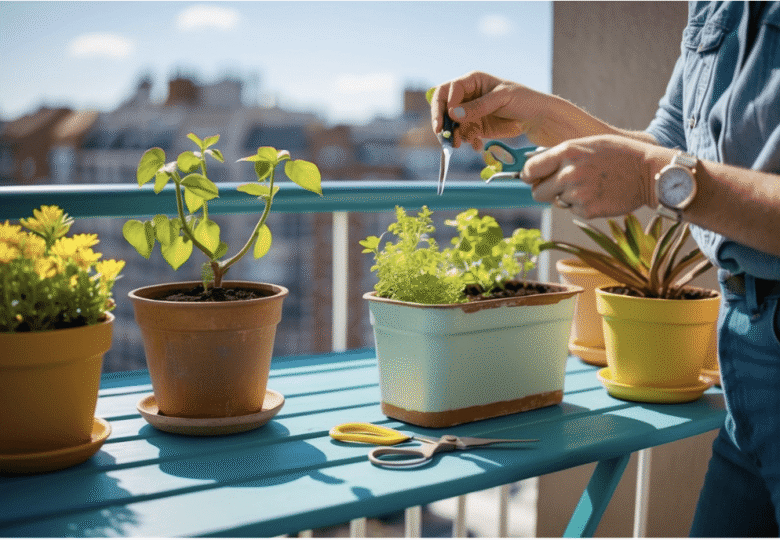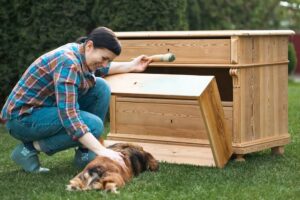Sustainable living starts with simple choices and creative projects that reduce waste, conserve resources, and benefit the world. Eco-friendly DIY projects are a wonderful way to help the environment at home. These projects promote responsible consumption and save money and energy. Reusing materials, repurposing existing items, and using natural alternatives can reduce our carbon footprint while adding style and functionality. Everyone can contribute to a green future with simple, fun DIY projects.
Natural Cleaning Products
Using natural cleaning products is one of the best strategies for preventing environmental pollution. Many store-bought cleaning products contain harmful chemicals that can pollute waterways and indoor air. Using vinegar, baking soda, lemon juice, and essential oils, you can create safe and effective cleaning solutions at home. Just like commercial cleaners, these mixtures can clean surfaces, freshen the air, and disinfect spaces. They can reduce environmental damage and promote health, especially for people with allergies.
Used T-shirt Bags
Plastic bags take hundreds of years to decompose and pollute oceans and landfills. Making reusable grocery bags or making bags from old T-shirts can go a long way toward reducing single-use plastic waste. This DIY project makes a sturdy and beautiful bag without sewing. Just cut and tie. The recycled bag is washable, durable, and customizable, perfect for groceries, books, and everyday essentials. It creatively repurposes unwanted clothing.
Make a Compost Bin for Organic Waste
Composting yard waste and food scraps is an effective strategy for reducing household waste. Making your own compost bin using old plastic bins, wooden pallets, or metal boxes is easy and inexpensive. Homemade composting systems can turn organic waste into nutrient-rich soil for gardens and houseplants. It minimizes methane emissions from landfills and promotes soil health without the use of synthetic fertilizers. For every banana peel and coffee ground, composting can effortlessly benefit the environment.
Homemade Rainwater Harvester
Collecting rainwater outdoors is a practical way to save water. With a DIY rainwater harvesting system using a bucket or large container, you can reduce the amount of municipal water used for gardening, car washing, and household cleaning. With just a few tools and a filter, you can build a practical and environmentally friendly water storage. This type of storage is very useful in dry areas and helps to conserve water. Rainwater recycling reduces the amount of rainwater runoff and reduces the need for rainwater treatment systems.
Solar Outdoor Lighting
Solar outdoor lighting is a wonderful way to save money and be environmentally friendly. Solar lights are easy to find and install, with no wiring or energy required. Make your project more personal and sustainable by making your own solar garden lights or lanterns using glass jars, small solar panels, and LED bulbs. These lights capture sunlight during the day and automatically illuminate your outdoor space at night, creating a safe and comfortable atmosphere without the need for mains power. This simple idea uses renewable energy in a creative and stylish way.
Replace Plastic with Beeswax Wrap
Another eco-friendly DIY way to reduce plastic in your kitchen is to use reusable beeswax wrap. Fabric, beeswax, and occasionally jojoba oil or resin combine to create these flexible, natural food protectors. They are more environmentally friendly than plastic wrap or aluminum foil and are breathable, washable, and compostable. Homemade beeswax wraps are easy to make and can be customized in size and pattern. They keep food fresh and make great gifts for friends and family.
Sustainable Recycled Flowerpots
Reduce waste and add a touch of greenery to your home by making flower pots from recycled containers. Tin cans, glass jars, plastic bottles, and broken furniture can all be repurposed into flowerpots. With drainage holes and creativity, you can recycle materials and bring nature indoors. Grow herbs, flowers, and vegetables in these homemade flowerpotsto promote sustainable living and biodiversity. It’s fun and meaningful and combines art, gardening, and recycling.
Non-Toxic Painted Upcycled Furniture
Repurposing antique furniture is both environmentally friendly and creative. Eco-friendly methods, such as sanding, restoring, and painting or staining, can give many old pieces of furniture a new, fresh look. Non-toxic paints with low volatile organic compounds protect your health and prevent air pollution. Recycling furniture saves money, reduces the need for new materials, and keeps bulky furniture out of landfills. Refurbishing old furniture such as tables, chairs, and dressers can make homes more sustainable and attractive.
Conclusion
Eco-friendly DIY projects can help people effectively combat environmental pollution. Creative activities help us reuse, recycle, and reimagine resources. By making everyday items more sustainable, we can minimize waste, reduce carbon emissions, and create a bond with our products. Every small project, when it becomes a lifestyle, will have a greater impact. By using your hands to make practical things, you create value and protect the environment at the same time. Everyone can contribute to a cleaner planet at home through environmental awareness, tools, and inspiration.
FAQs
1. Do eco-friendly DIY projects save money?
They definitely save money. Most of these craft projects utilize inexpensive or household materials. They can reduce energy bills and eliminate frequent purchases, which can save money in the long run.
2. What are the most eco-friendly DIY materials?
Ideal materials include recycled glass jars, cotton fabric, wood, and biodegradable chemicals. Non-toxic, biodegradable materials can increase the sustainability of the project.
3. How can I make my DIY project more eco-friendly?
Use recycled or second-hand materials, avoid plastics and synthetics, use renewable or natural ingredients, and consider the product’s life cycle.
4. Can I teach kids about sustainability through DIY?
Yes, eco-friendly DIY projects are a delightful way to teach kids about sustainability, creativity, and environmental responsibility.
5. Where can I find eco-friendly DIY ideas?
Get inspired by sustainable and waste-free websites, blogs, YouTube tutorials, and social media. Join eco-friendly online maker communities.




